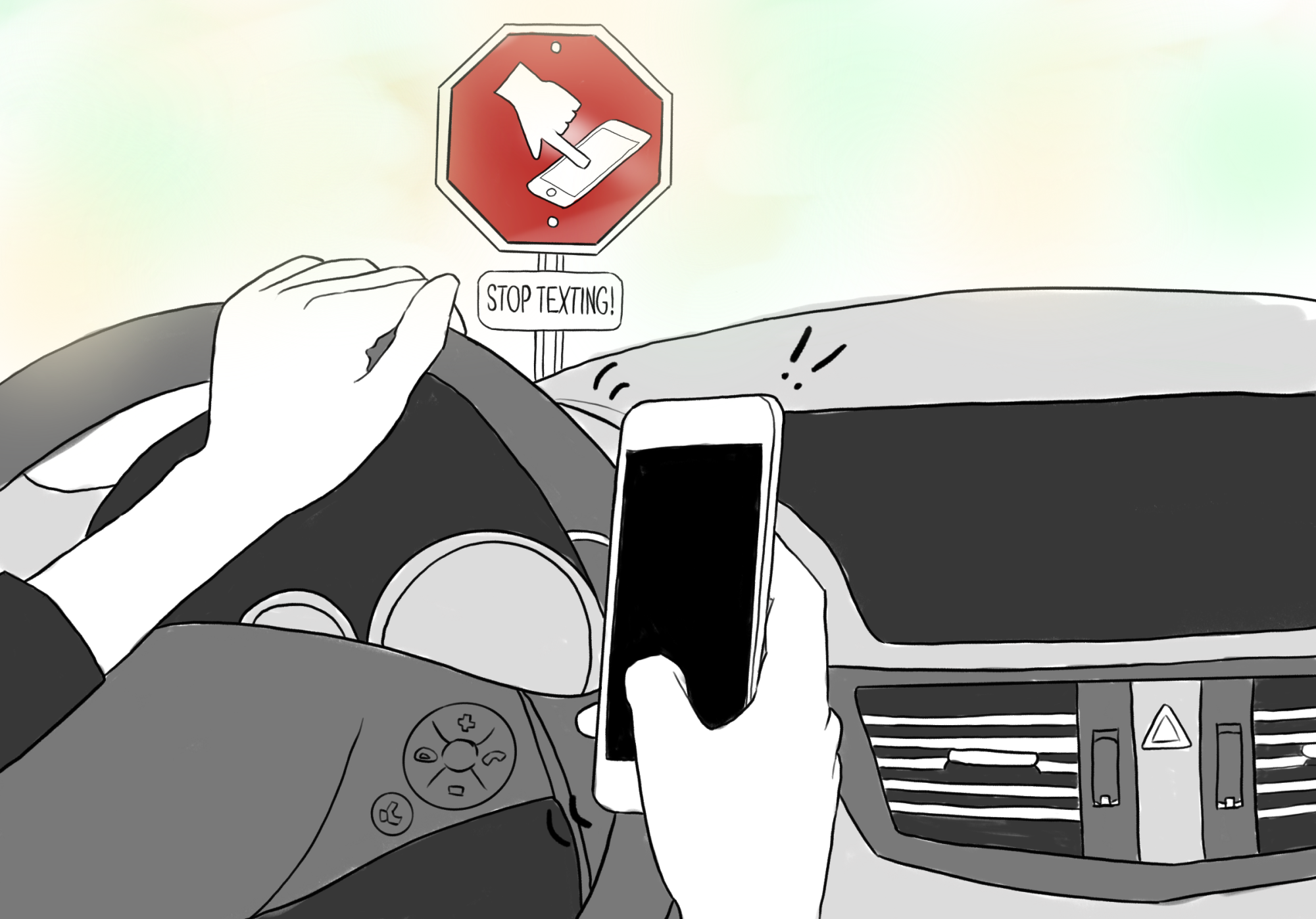Have you ever sat in a car with a friend who seems more engrossed in their phone or the radio than the road ahead? In our modern day society, the typical answer to this question is yes. Distracted driving has been a pressing issue in modern society, but has increasingly affected citizens due to mobile phone usage. From texting, to calling, to even just listening to music, interference behind the wheel creates a hazard for not only the people in the vehicle, but for the people in the area. Although many are aware of the dangers these distractions can pose, they do not realize how life-threatening this recklessness can truly be. For instance, according to Children’s Hospital of Philadelphia, in 2020, 3,142 people were killed and 324,652 people were injured as a result of distracted driving. These incidents are not just distant headlines—they are tragedies that have the potential to impact anyone in our community.
One of the most common distractions for drivers is cell phone usage. When asking students about their perspective on this, Dylan Steinberg ’26 said, “While I am driving I don’t really have any distractions especially as a new driver, I keep my focus on the road. However, I think my biggest distraction would be my phone. I am never tempted to go on my phone, but I always have it next to me but I really try to stay focused on the road.” On the contrary, Alexandra Dore ’24 admitted to going “on [her] phone sometimes while driving, normally to change the song. However, she shares that the time spent is, “Not that much, and usually when I am checking the map.” The implications of these seemingly harmless acts go beyond missing a stop sign or failing to yield to pedestrians. Every time one engages with their phone while behind the wheel, the likelihood of accidents and harm greatly increase. In fact, research from the National Highway Traffic Safety Administration has shown that making calls while driving raises a teen’s risk of crashing by six times, while texting and driving increases the risk by 23 times.

Although they may not seem to be severe, there are repercussions in place if you are caught using your phone while in a vehicle that is not in park. Responding to a quick text or facetiming a friend while driving is often normalized, but being caught doing so results in a $50 fine plus court costs and other fees. This minimal fee should be considered the best-case scenario, as you could be putting multiple lives in harms way if not caught. It is important to note that teen drivers are four times more likely than adults to get into car accidents while using their cell phones. Distractions while driving can lead to missing events on the road, objects, or signals, potentially leading to harm of others. For example, an anonymous student said they “have experienced distracted driving on the road. [They] had one friend who has gotten in multiple accidents while she was on her phone.”
Despite this risk, many young drivers continue to proceed with this habit. Some may not fully grasp the dangers, while others may feel influenced by the normalization of such behavior. The lack of negative attitudes pertaining to phone use while driving and the belief that it is socially acceptable contributes to the prevalence of distracted driving amongst young drivers. These social norms, such as perceptions of what friends and family do, impact behavior behind the wheel.
Another reason why distracted driving is so prevalent amongst teens is due to their limited driving experience. Teenagers who have obtained their permits typically have only six months of driving experience. According to the National Highway Traffic Safety Administration, one out of every three teens admits to using their phones while behind the wheel. Research shows that making calls while driving raises a teen’s risk of crashing by six times, while texting and driving increases the risk by 23 times.
According to Safety Driven, while our brains are capable of handling multiple tasks, certain activities— such as driving while engaging in other tasks— don’t blend well. A study from Stanford University also demonstrates the effectiveness of focusing on one task rather than multitasking. Although driving may seem like a simple task and not require much of a conscious effort, adding tasks like using a phone or eating can overwhelm our brains. Driving demands significant attention, from monitoring your surroundings, recalling past experiences, and planning ahead, effectively keeping the prefrontal cortex occupied. Both sides of the brain must work together to maintain its focus, but when the driver’s focus is split, the two sides end up working separately—leading to chaos.
Distracted driving is a prevalent issue that affects people both locally and globally. It leads to serious consequences, especially considering the alarming death rates associated with it. Along with the numerous possible other distractions, cell phone use while driving stands as a major issue. Given our community’s large number of teenagers, it is important to recognize the dangers of this issue and remind your friends and family to keep their eyes on the road.




